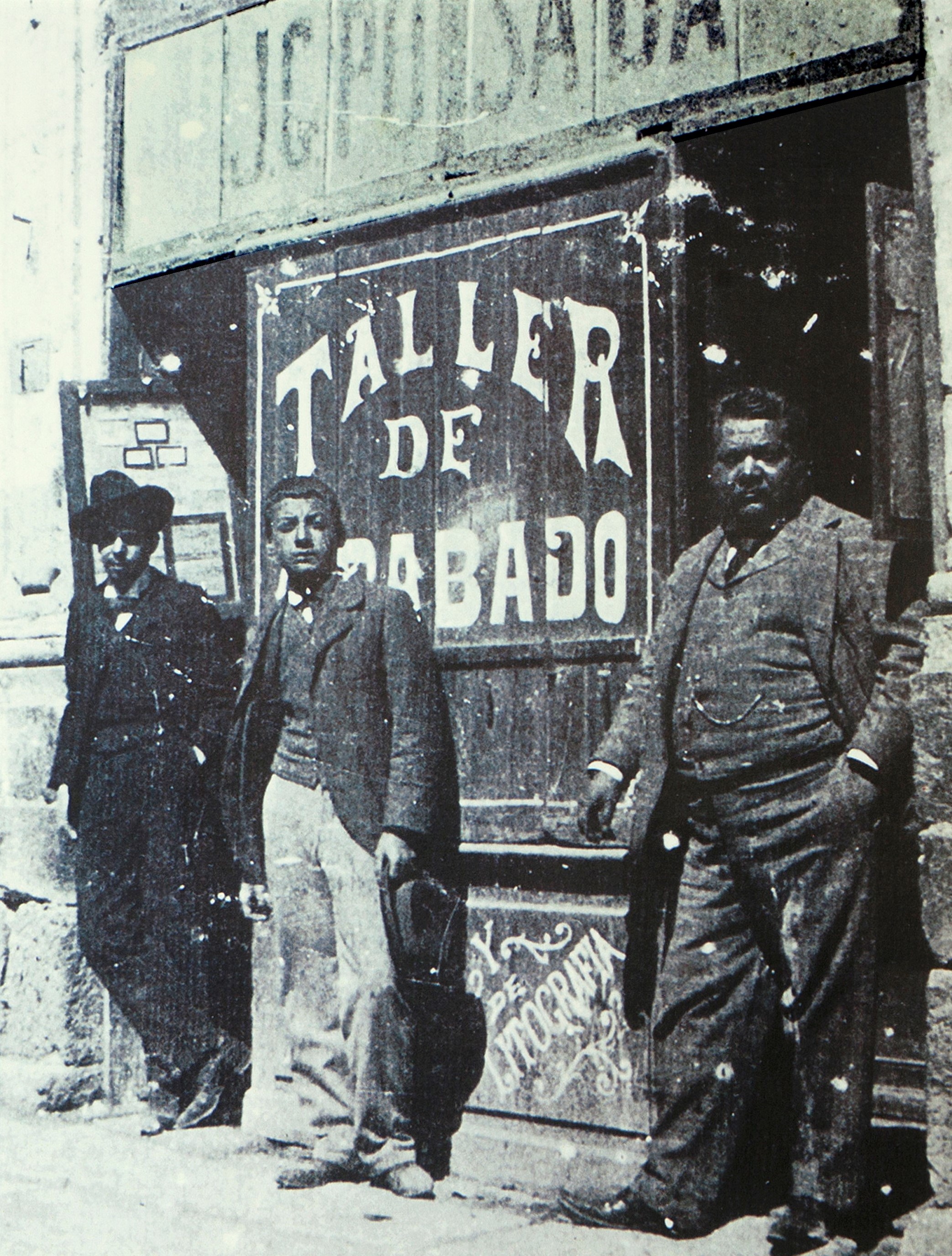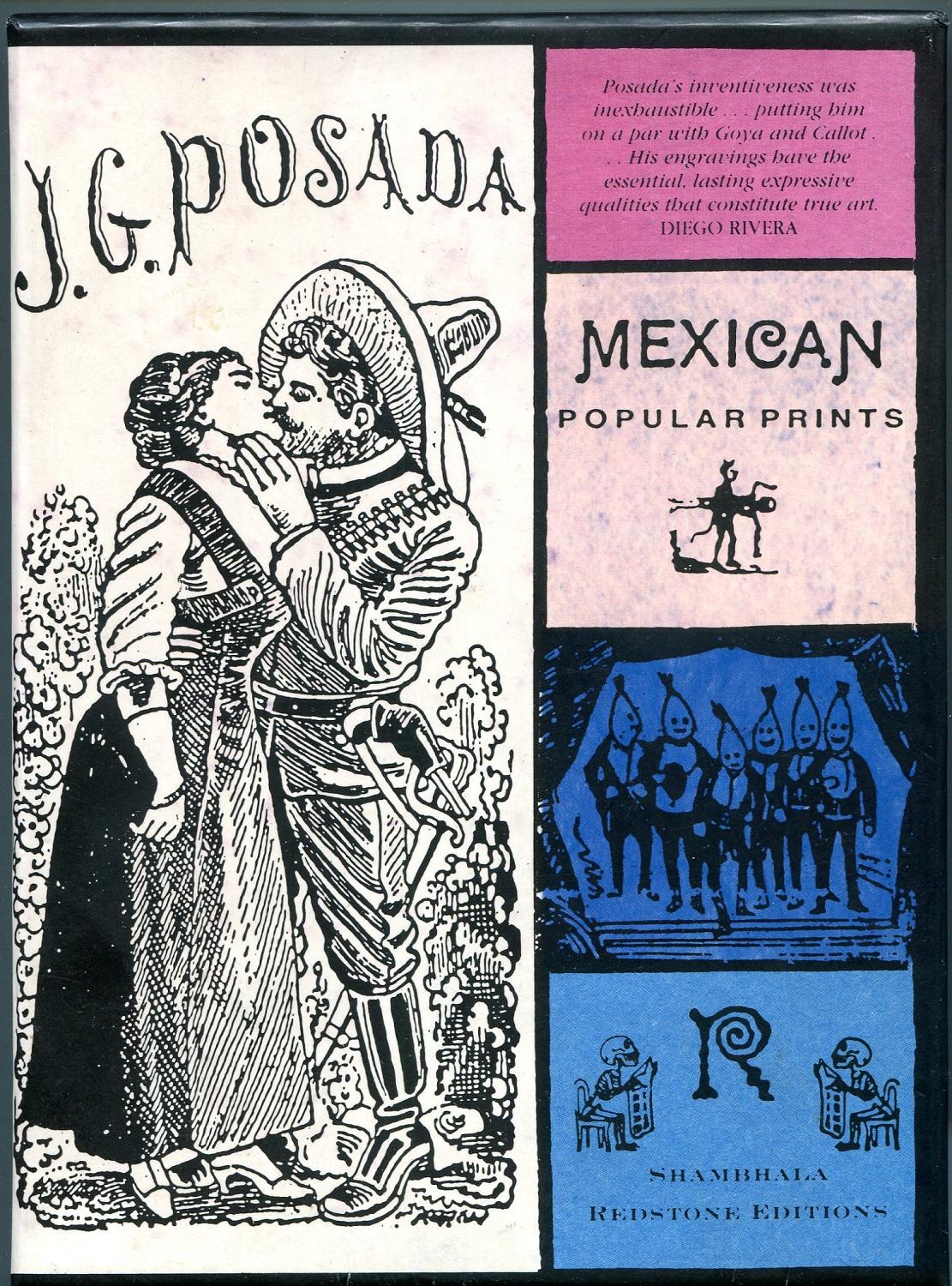Abstract
This print is 29.7x21.9 cm pamphlet on newspaper type material. It was created along with others like it between 1871 and 1913 out of Mexico City, Mexico by José Guadalupe Posada. This print and others were produced out Antonio Vanegas Arroyo's printing housing and were sold as entertainment to common folk in Mexico City. The songbooks contained full length songs and simple verses, with subjects that included but were not limited to prayers and religious themes, short stories and plays, and were sold and produced cheaply. It was created using one of two techniques popular to Posada at the time: black line and white line lithography. Research into these specific songbooks is limited, so a deep dive was done into the creators.

Photo Courtesy of The Posada Art Foundation
José Guadalupe Posada
José Guadalupe Posada was an artist that was not recognized by many during his lifetime, but post mortem became known for his popular prints that were spread throughout Mexico City. Posada began his life as an artist in his hometown of Augacalientes, working under Manuel Manilla creating political cartoons. He was then forced to leave due to political opposition, where he became a teacher of Lithography at the Leon secondary school for 4 years. Only then did he move to Mexico City in order to work in Antonio Venegas Arroyo's printing shop, where he stayed for the rest of his life and produced his most famous works. Posada created work that ranged from chapbook covers, to newspaper and magazine mastheads, to broadsheets, to songbooks, even as far as cigar box lids. His work became very influential in Mexico because he was working under the Diaz Regime, which was known for censoring and corrupting journalists and their work. He drew much of his inspiration from the spirit of rebellion created by Diaz's reelection, producing satirical figures of landowners, corrupt religious figures and even Diaz himself at times. Little is known of the inner workings of his mind, as he left no writings, but it is known that he had a wife and a child who ended up passing away at a young age.
Antonio Vanegas Arroyo
Antonio Vanegas Arroyo ran a successful printing house out of Mexico City, Mexico with Posada being his main artist. He produced many different styles of prints in order to meet the needs of the common population of Mexico City. He was known for using cheap materials to create cheap prints that were meant to go into the hands of the literate population. His goal was spread news in a way that made it entertaining and easily accessible, and allowed the lower class population of Mexico City have access to the same kind of news and more as the elite class. He was popular among the merchant class of Mexico City, so he hid his involvement in prestigious and influential activity of newspaper publishing in order to keep up an image for the public, who did not wish to participate in the commodity consumption of the elites. There was a deep class division that was present due to the reign of Diaz and his political policies that focused less on assisting the poor peasants present in Mexico and focused more on growing the Mexican national economy. Many of the works created by Vanegas and Posada reflected the rapid industrialization that was occurring throughout Mexico City, which is seen in the first song present in this songbook. It discusses the women traveling by train through the different cities, a feat that would not have been possible before Diaz's expansion of the railroads.
The Print Shop
Photo Courtesy of City of Albuquerque
Discover More
-
-
Posada's Broadsheets: Mexican Popular Imagery, 1890-1910 by
ISBN: 0826319041Publication Date: 1998-08-01José Guadalupe Posada (1852-1913), a Mexican graphic artist, lived during one of Mexico's most chaotic times. The graphic illustrations he produced for the "broadsheets," the tabloids of the day, distributed on the streets of Mexico City became icons of Revolutionary Mexico, portraying murder, suicides, robberies, and disasters endured by the citizens, especially the Mestizo, of Mexico City. "In this well-written and handsomely illustrated book, art historian Patrick Frank examines the European (i.e. French and Spanish) and Mexican influences on Posada's art as well as the many stories that served as the sources for his illustrations."--The Historian "Posada's broadsheets detail many stories that were front-page news at the time and include a variety of colorful characters, among them Jesus Negrete, a Mexican Robin Hood-type career criminal, as well as a man who killed his parents and ate his baby son. . . . Frank shows that Posada took the point of view of the working class, not from the defenders of the regime or of its organized opposition."--Umbrella
